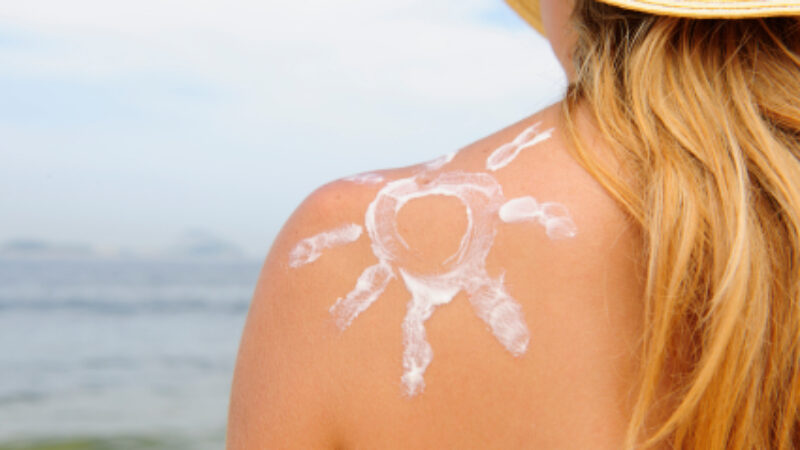Myths about sunscreen are everywhere and it’s time to set them straight.
Here are a few we hear all the time.
1. Waterproof Sunscreens
Although the term is prohibited by both the FDA and Health Canada, you can still find sunscreens labelled as “waterproof”. Here’s our first myth about sunscreen: there’s no such thing as a “waterproof” sunscreen, because sunscreens will eventually come off your skin after an extended period of time in the water.
Instead, look for sunscreens labelled as “water-resistant” and “highly water-resistant”. This means they remain active and protective after 40 minutes, or 80 minutes of exposure to water, respectively. If you’ve been perspiring freely or enjoying yourself in the water, some degree of degradation will have occurred. Drying yourself off with a towel will also remove sunscreen, so be sure to reapply to maintain adequate protection.
2. Moisturizers with SPF are Enough
One of the more persistent myths about sunscreen is that moisturizers with SPF are enough.
This is very much an ‘it depends’ myth, based on how much you actually use. The recommended amount for full protection as listed on the product label is 1/3 to 1/2 teaspoon for the face and neck area. If you’ve ever actually measured out half a teaspoon of moisturizer, you’ll know that it’s probably much more than you normally use! If you’re applying less than that, layering with a dedicated sunscreen is a great way to protect the skin. Luckily, there are many sunscreens that are made specifically for the face – lightweight, invisible, non-greasy and non-shiny. We love Anthelios UVMune 400 Hydrating Cream SPF 50+ and use it year-round.
3. Once and Done
If only this myth about sunscreen would stay buried! Unfortunately, the “once and done” theory doesn’t apply to sunscreen. Using sunscreen in the morning and then spending the day running errands, gardening or sightseeing around the city will result in a decline in effectiveness from sweat and UV exposure. Just hanging out on the back deck with friends or playing with the dog in the park are also prime occasions for sunburn. Remember that getting sunburns and sun damage are not isolated to a day at the beach. The rule of thumb is to reapply sunscreen every 2 hours. We think it’s a good one.
4. Sunscreens are Only for Summer
If we had to pick the most persistent myth about sunscreens, this would be the one. Sunscreens protect from not only the UVB rays that burn during the hottest days of the year but also from the UVA rays that cause long-term sun damage, wrinkles, pigmentation and cellular damage. The bad news is that UVA rays are prevalent from sun-up to sun-down, on cloudy days and sunny days, 365 days a year. These long, penetrating rays can even go through window glass. The good news is that using a sunscreen daily that’s labelled as broad-spectrum can help protect against premature aging, skin damage and some forms of skin cancer. If there’s one thing you take away from this myth-busting lesson, we hope it’s this one.
Ready to choose a sunscreen that you’ll be happy using? Check out our full selection here or call us: we’re also always happy to talk sunscreen.



